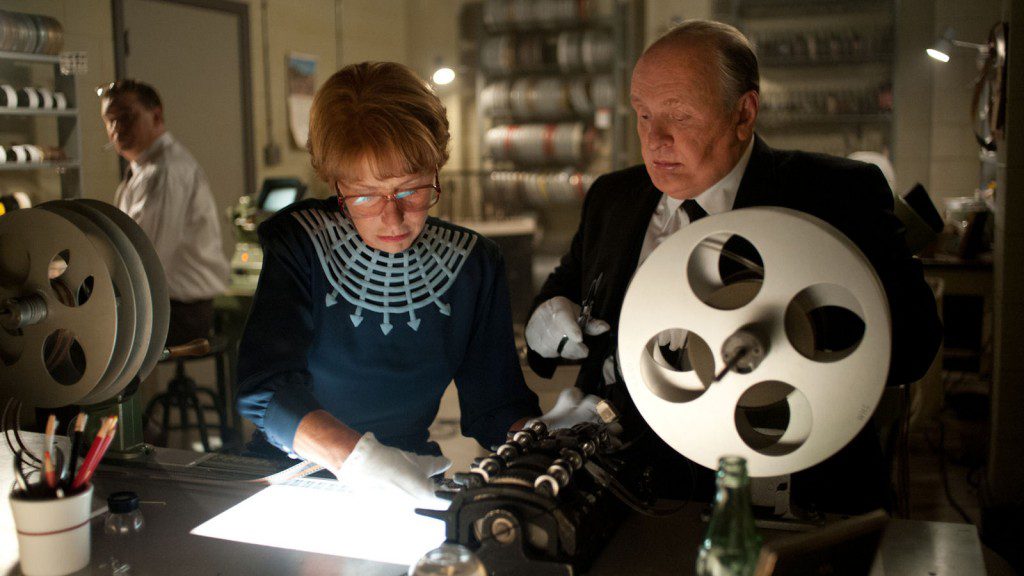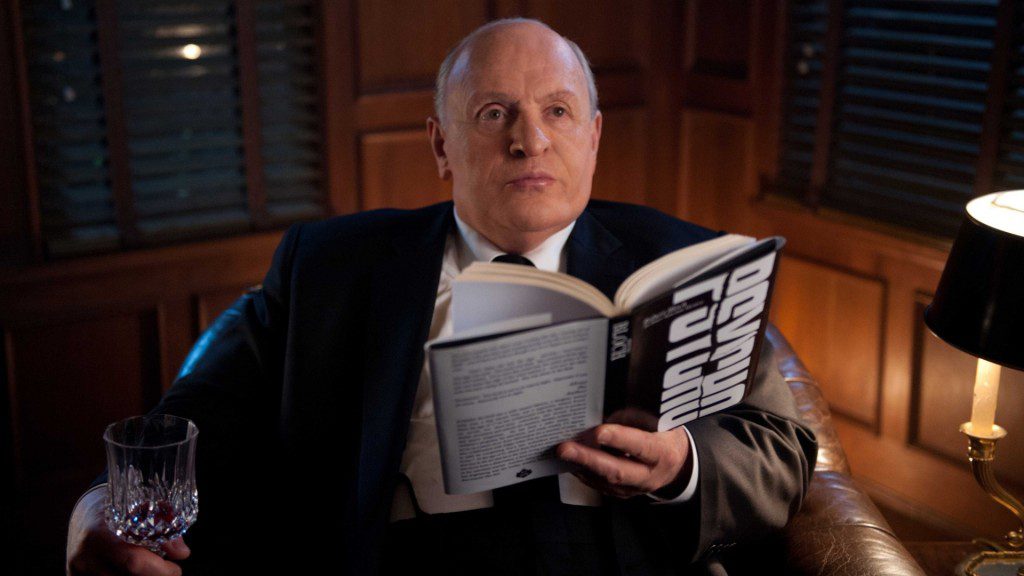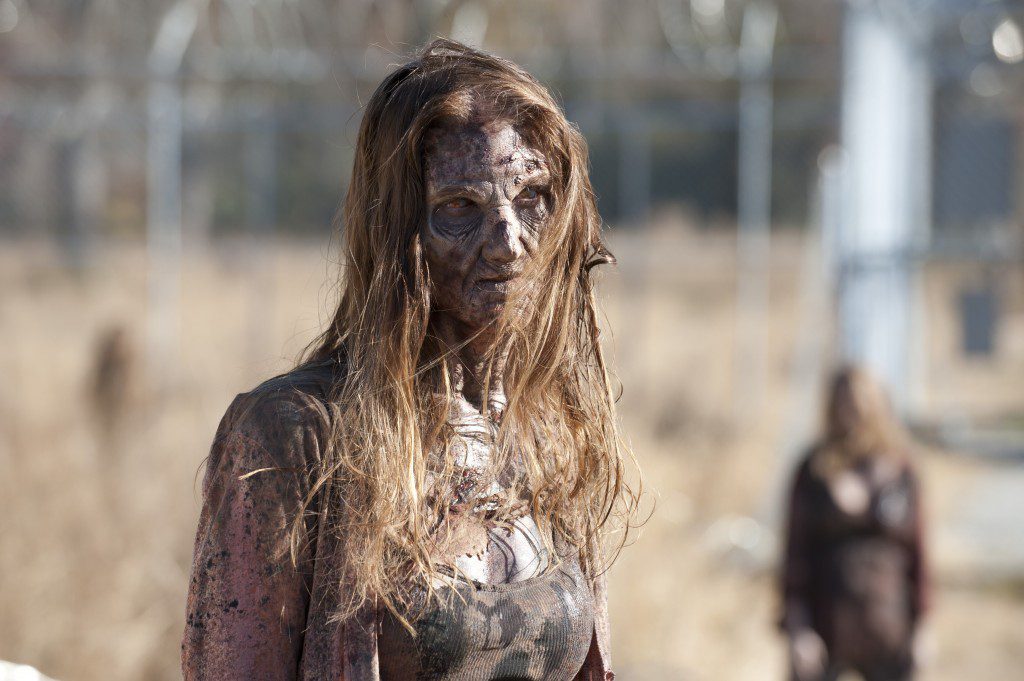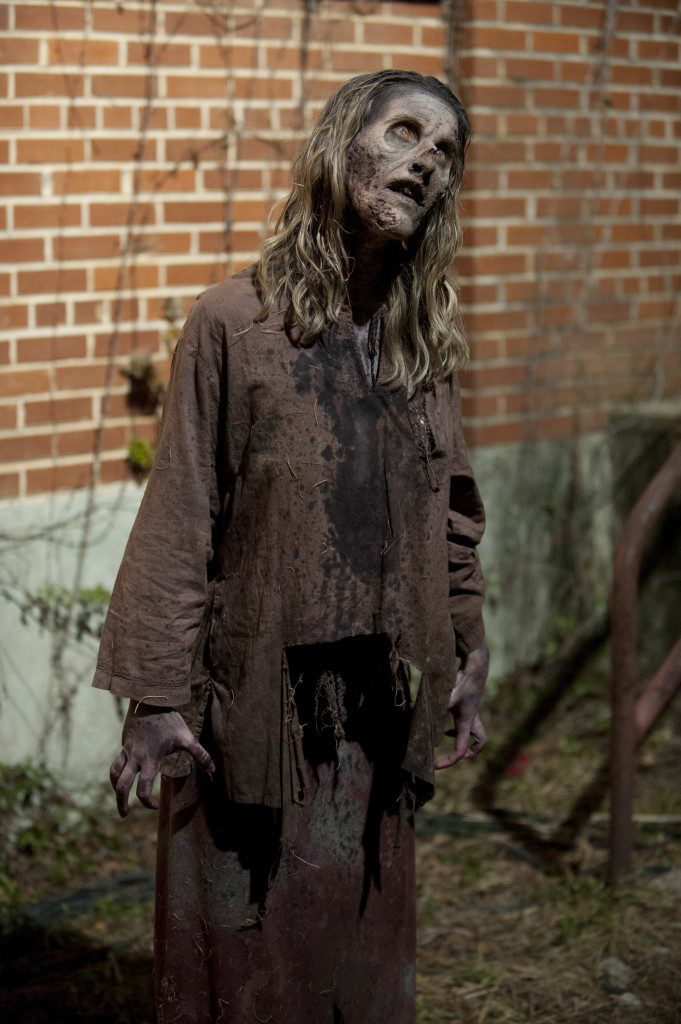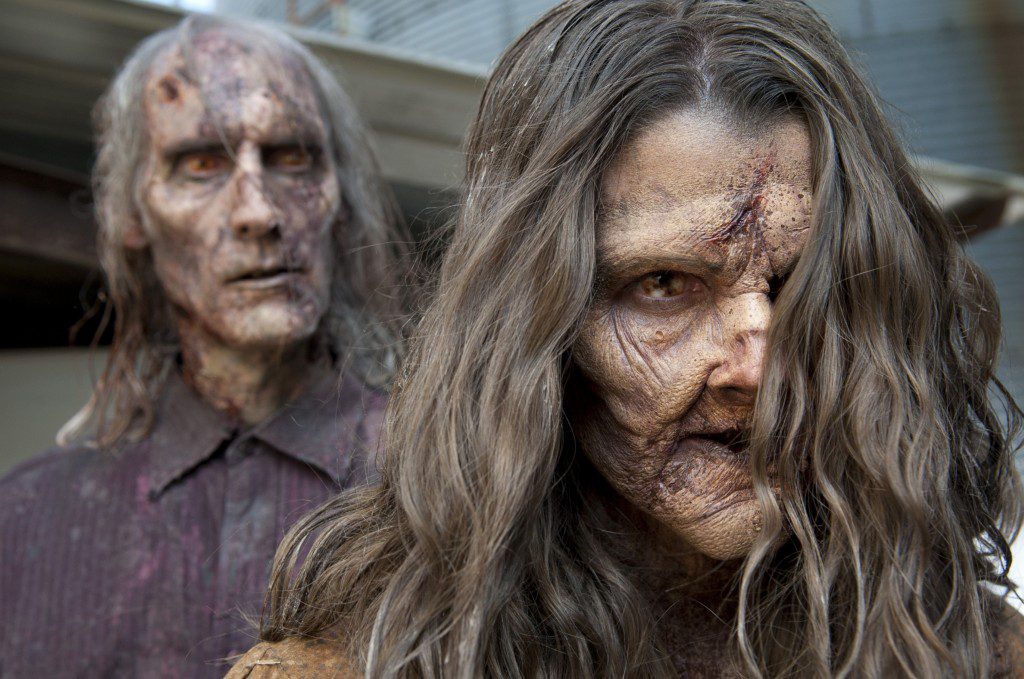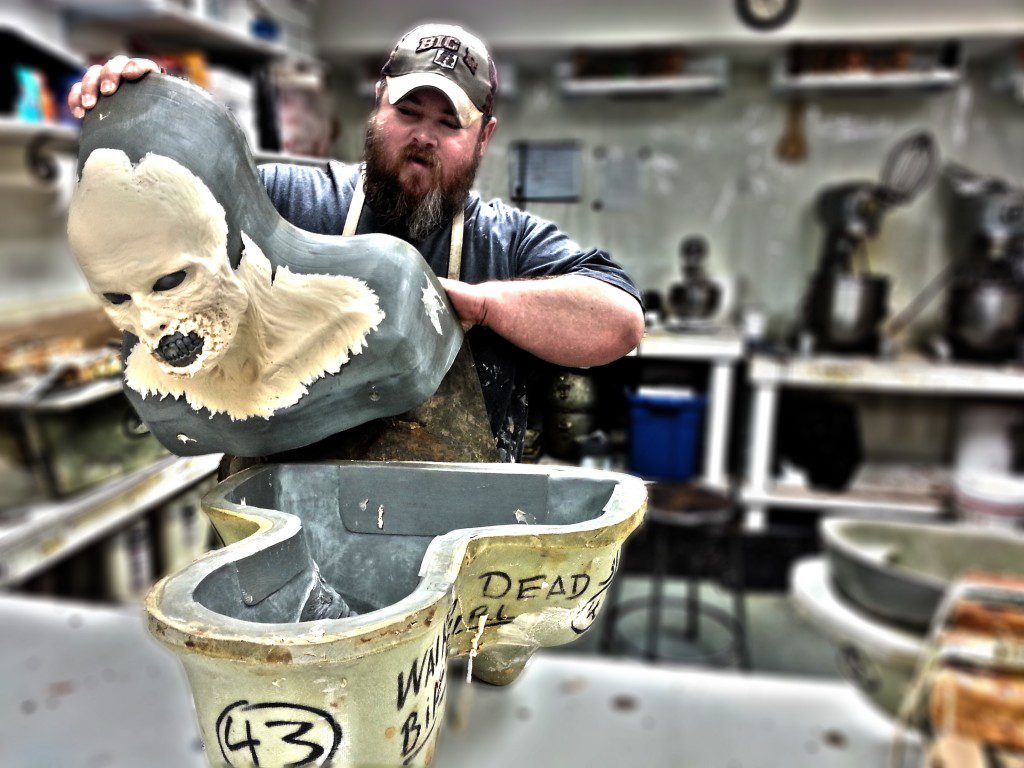
“You want the audience to believe those zombies are real. You want them to believe they’re alive. It’s crucial that it looks as real as possible, that you actually scare people if they see it and believe it. I want them, hours after they see the show, to think there could be zombies lurking around their house.”
Although abject terror isn’t always his goal, this is the standard to which Derek Krout, prosthetics designer for KNB EXF group, holds himself. The 38-year-old Tulsa native has made a name for himself as one of Hollywood’s top special effects guys. He’s nominated for an Emmy for his outstanding work on AMC’s smash-hit zombie drama The Walking Dead. Emmy nominations are heavyweight Hollywood stuff, but Krout approaches it with the natural, confident humility of an Oklahoman.
“Nomination for an Emmy is a huge honor. I’m up there representing Oklahoma… KNB has won Emmys the last three years in a row. I contributed to that. When things like this happen, I always think of where I started from. That’s Oklahoma.” (Krout didn’t take home an Emmy from the Sept. 15 presentation of the Creative Arts Emmy Awards, but, as he says, “there is always next year.”)
Krout is a craftsman, an artist of sorts. He heads up the prosthetics department at KNB EFX, one of the most prominent special effects shops in Hollywood. KNB isn’t a CGI house. It’s not what they do. KNB produces physical, lifelike body suits that convey incredible realism for, say, the aliens in Predators. And then there are smaller but important challenges, such as making wounded soldiers in The Pacific look as genuine as if they’d fought real battles.
Krout and his colleagues tell the stories within the stories. Good masks or makeup shorten the time needed to develop a character. They quickly, efficiently and wordlessly tell a good portion of a character’s story. They give depth to plots. If they’re convincing zombies, no narration is needed to explain them. The audience sees and believes and immediately sympathizes with the undead threat to their favorite characters.
“We’re very critical about what we see on screen. Sometimes we see things that other people don’t. We’ll look at something and think, ‘That doesn’t look good,’ or ‘Wow, did you see that bad edge?’ If it looks bad, it can kill the story. It can damage a film. The special effects have to look great. There’s no two ways about it.”
If Krout’s an artist, then his canvases are foam, gelatin, alginate, silicone, gypsum and anything else that yields the results he strives for. He employs them to sculpt, mold and cast the masks and other “appliances” that bring the real to the outlandish. Sometimes it all comes down to hair and fur. The upper halves of the quite hairy minotaurs in the Narnia series were the work of Krout’s department.
Krout’s latest gig will thrill comic book fans. He led the effort to transform Jamie Foxx into Elektro, the sociopathic villain in the upcoming Amazing Spider-Man 2. It was six months of work for Krout’s department, but he insists that it was a lot of fun. He also insists that Foxx will look great. And why wouldn’t he? Krout’s proven himself on countless films and television shows: The Walking Dead, Predators, The Pacific, Sin City, The Grey and the Narnia films.
Krout’s evolution into a special effects genius had a modest, even mundane, genesis. He simply asked himself the same question again and again. How, he wondered, do special effects artists make those creatures and monsters so real?
“Even as a kid I was inspired. Friday the 13th. Nightmare on Elm Street. Those classic 1980s
horror movies terrified me, but I loved to watch them. I snuck down to the basement and watched them every chance I got. I watched and wondered, ‘How did they get Jason to look so real? Why did Freddie Kruger look so authentic?’ That was it for me. That’s where it all started.”
After college, Krout kicked around Tulsa, doing set and wardrobe work for various small films and television shows. Eventually, he landed at Stage One Scenic, a Tulsa company that contracted out for everything from set construction to special effects. That was his in. It was an opportunity to get practical with his passion. He used the occasional special effects job as a springboard to get into a special effects makeup school. Then it was California or bust. He was 27.
Krout leveraged another of his Oklahoman qualities: determination. It was his mission, he says, to make things work in California. He ate a lot of peanut butter and jelly sandwiches when he arrived, but it paid off. He didn’t want to be the guy that calls home to ask his parents to subsidize his dream. He did it on his own.
“Oklahoma taught me that if I worked hard enough at something, I could achieve it. Every time I sat there thinking, ‘I don’t think I can do this. I don’t think I’m going to make it out here,’ I’d think about home. I know so many friends that would never give up. Then I sat there thinking, ‘I can do this.’ That’s just one reason I love Oklahoma. It’s still my home.”
Krout’s sitting on the edge of a new phase in his career. Ever since Jurassic Park debuted with box office shattering records 20 years ago, CGI has been all the rage in the special
effects industry. Some experts are already pronouncing physical special effects, the makeup and prosthetics, dead. Krout disagrees. He foresees an explosion of physical effects, even as CGI techniques become more sophisticated and capable.
“It’s funny. Sometimes CGI helps us. There are things that physical effects can’t accomplish. The same is true of CGI. There are things that, to make a special effect work, have to be done physically. They scratch our backs and we scratch their backs. They help us with certain things and we help them with certain things. We’ll always be doing physical special effects, from creature suits to the simplest, tiniest subtle makeup. The combination of both creates an amazing film if it’s done right. Some really cool stuff comes out of that partnership.”
Krout credits a lot of people for his success. Mom, dad, brothers, his girlfriend, mentors and countless friends. H loves his job. He’s one of the lucky ones. He follows his heart to work every day. If he keeps up the momentum he’s built over the last decade, he won’t have to think about the first Emmy. He’ll be thinking about the tenth — and the ones that follow it.























